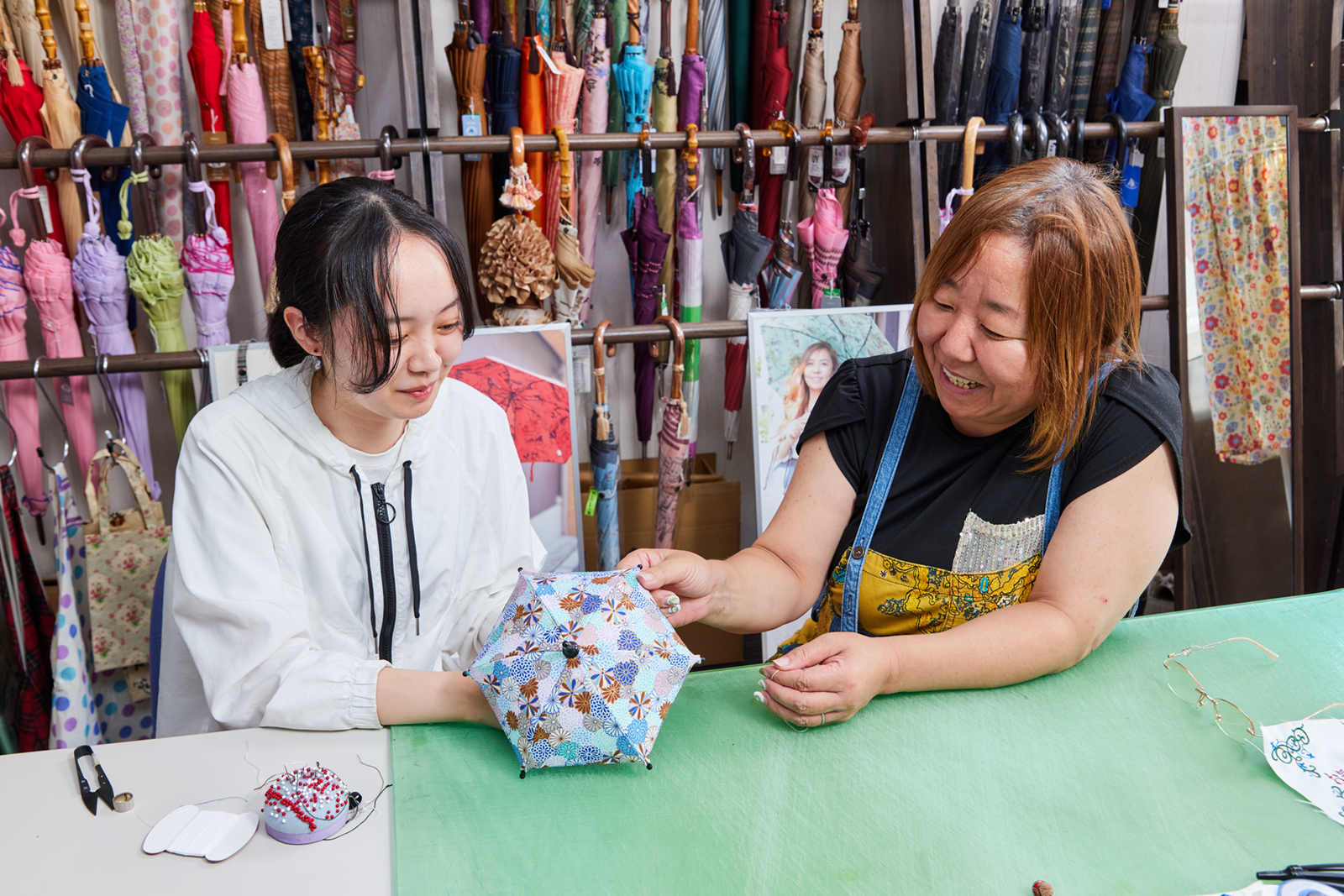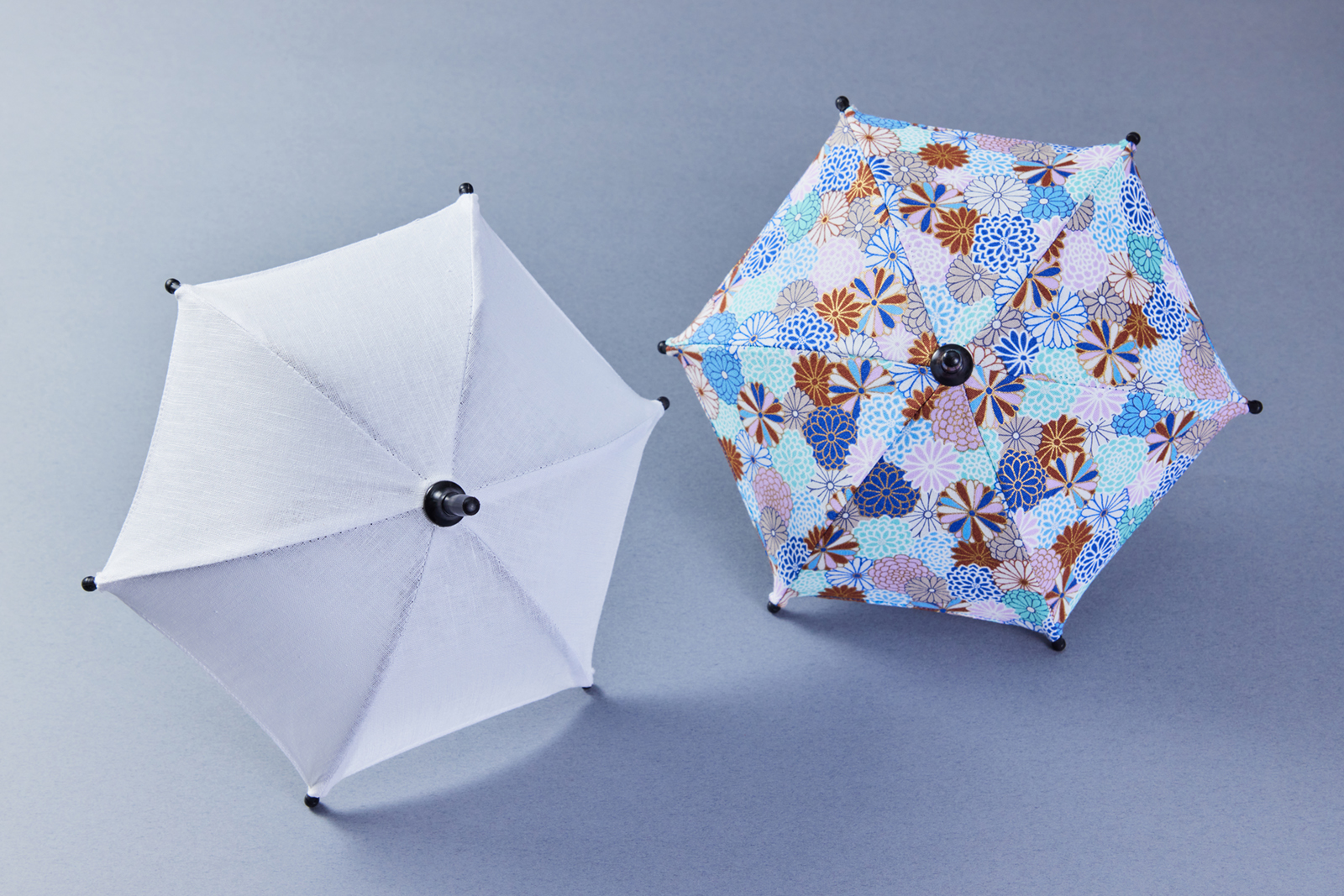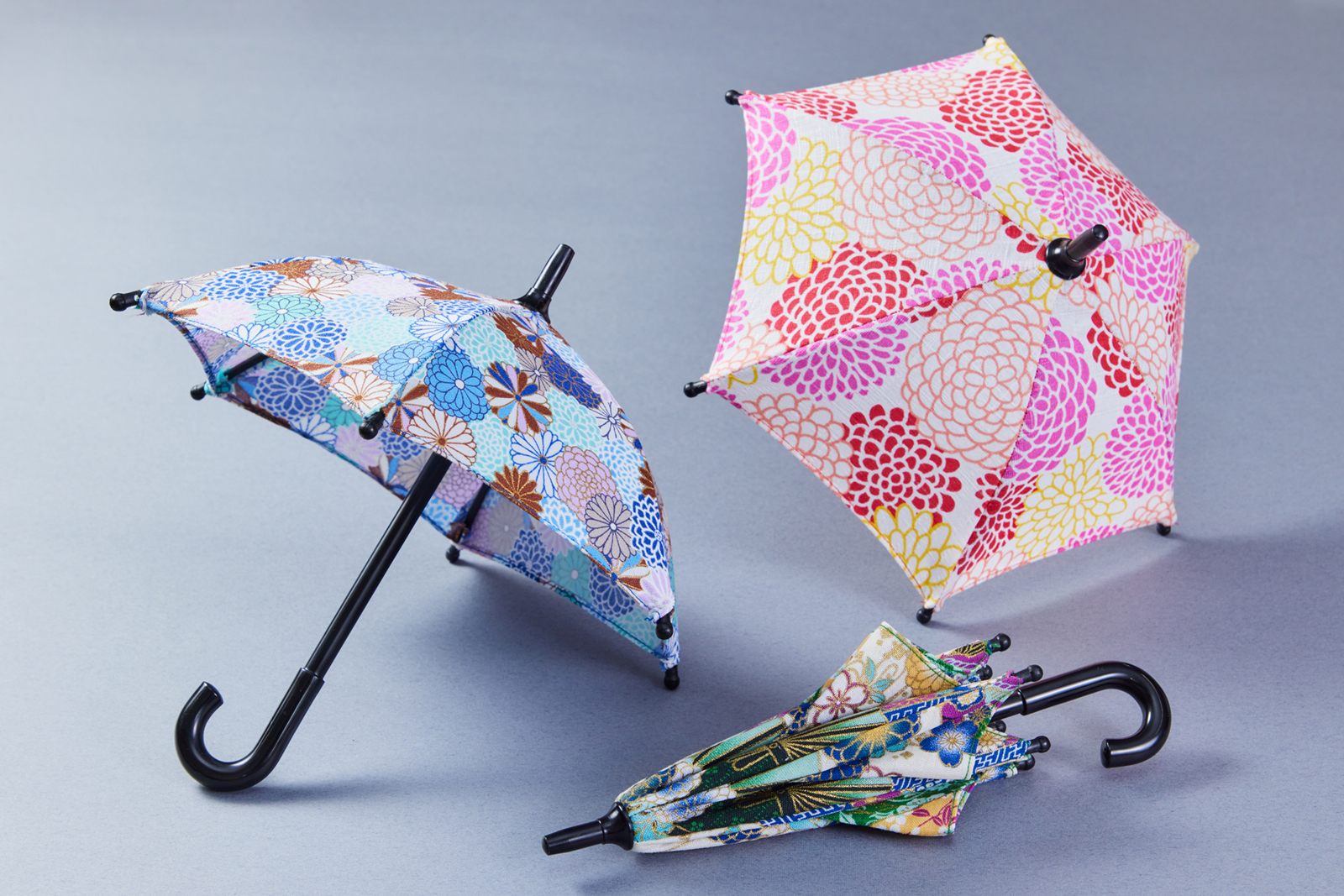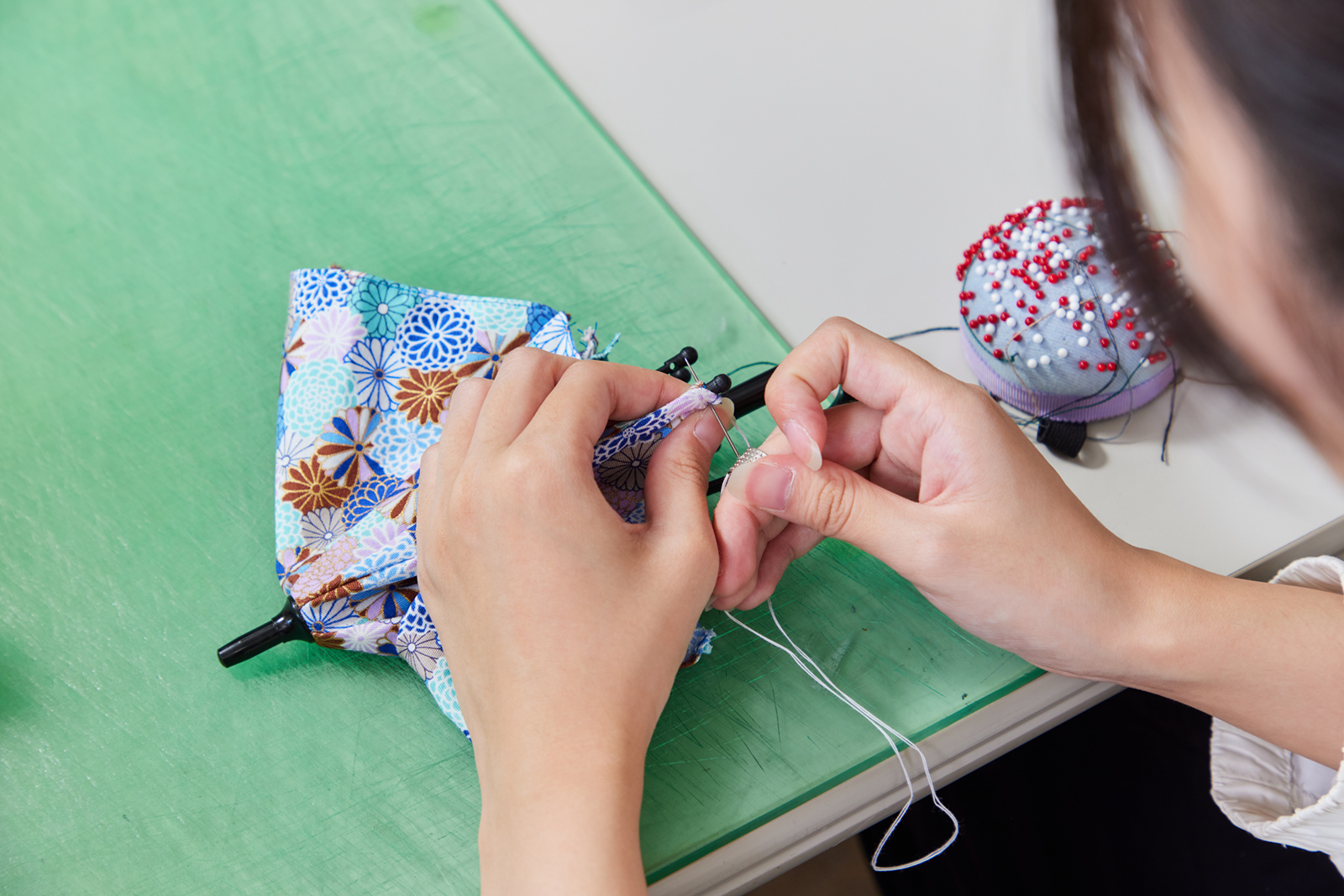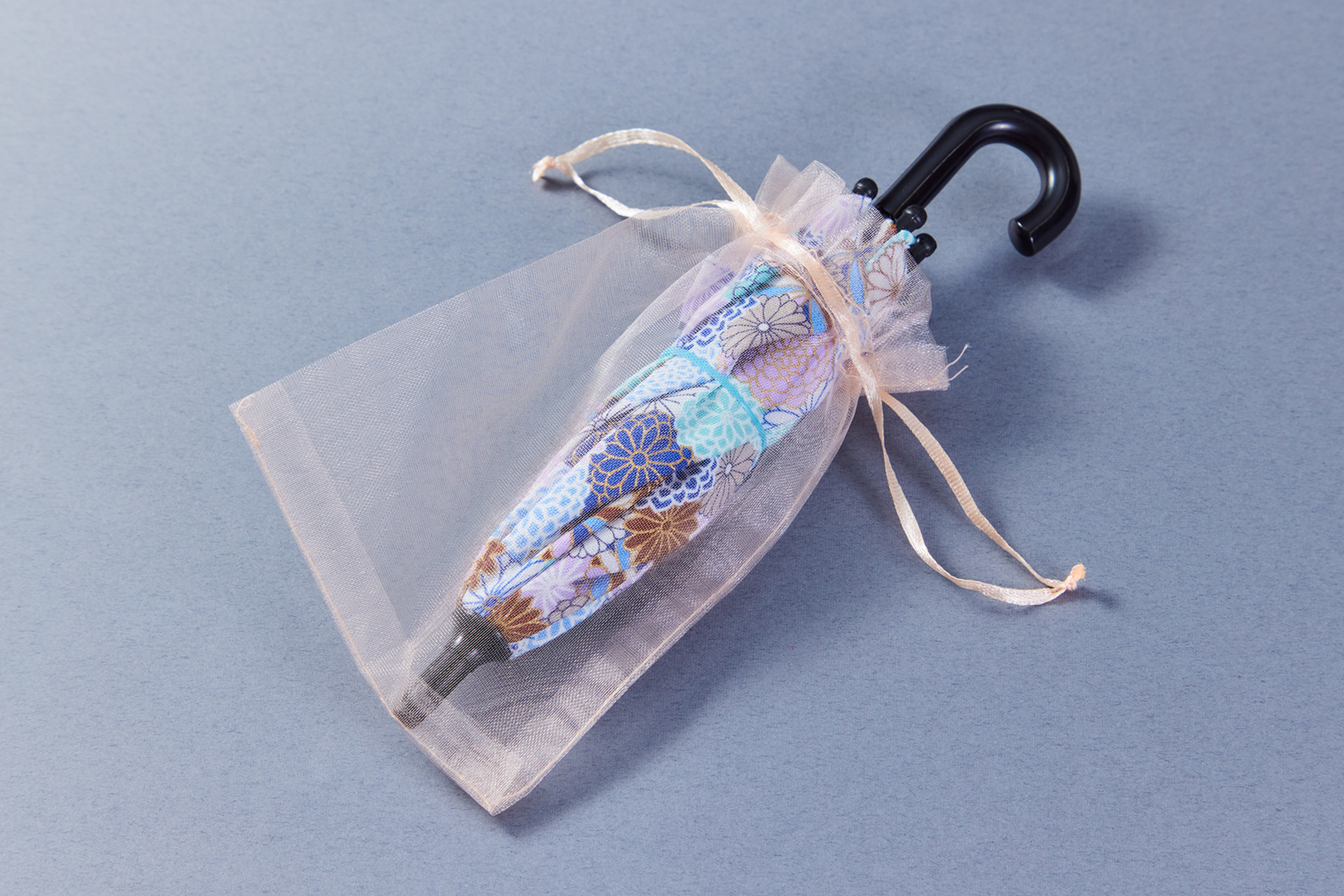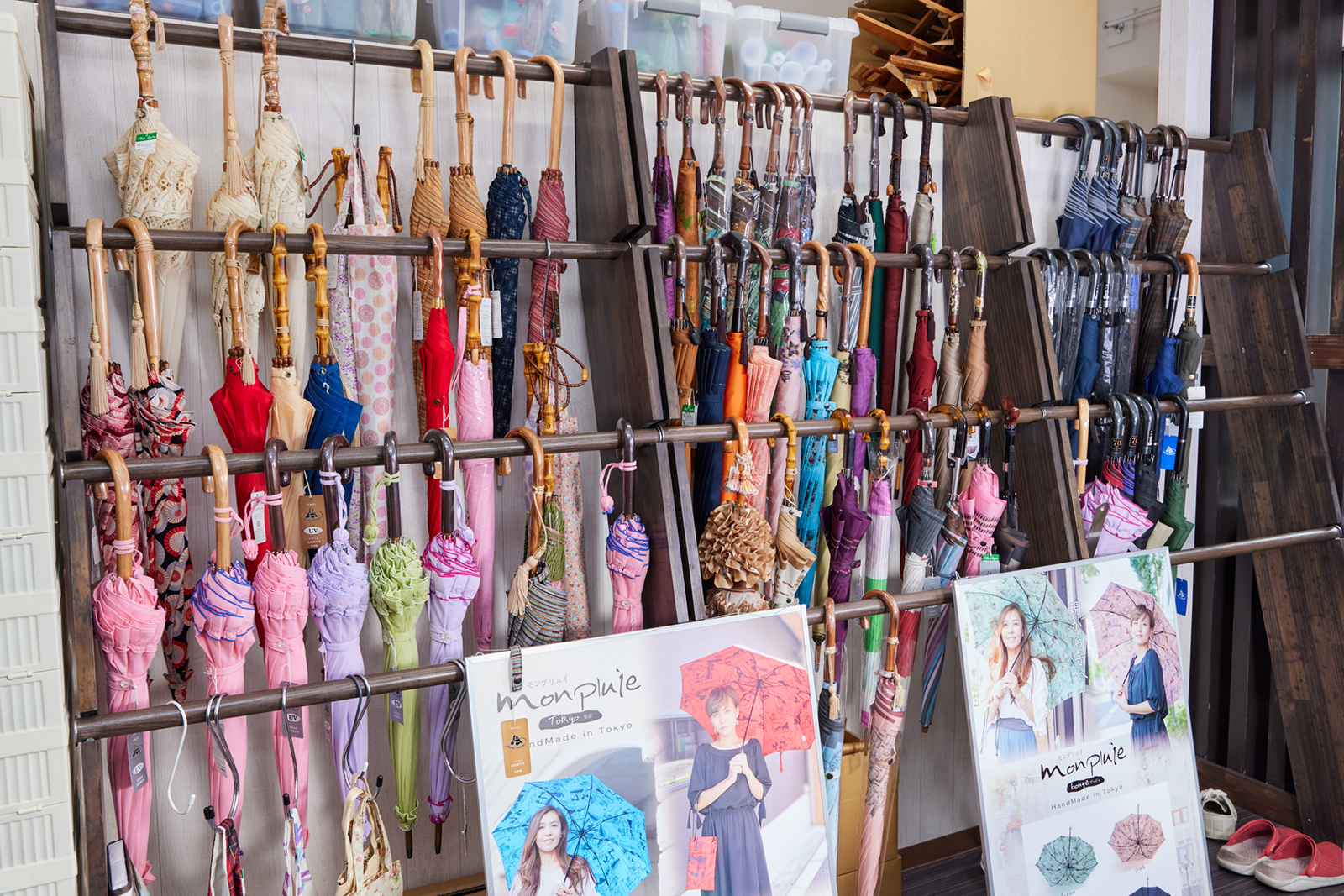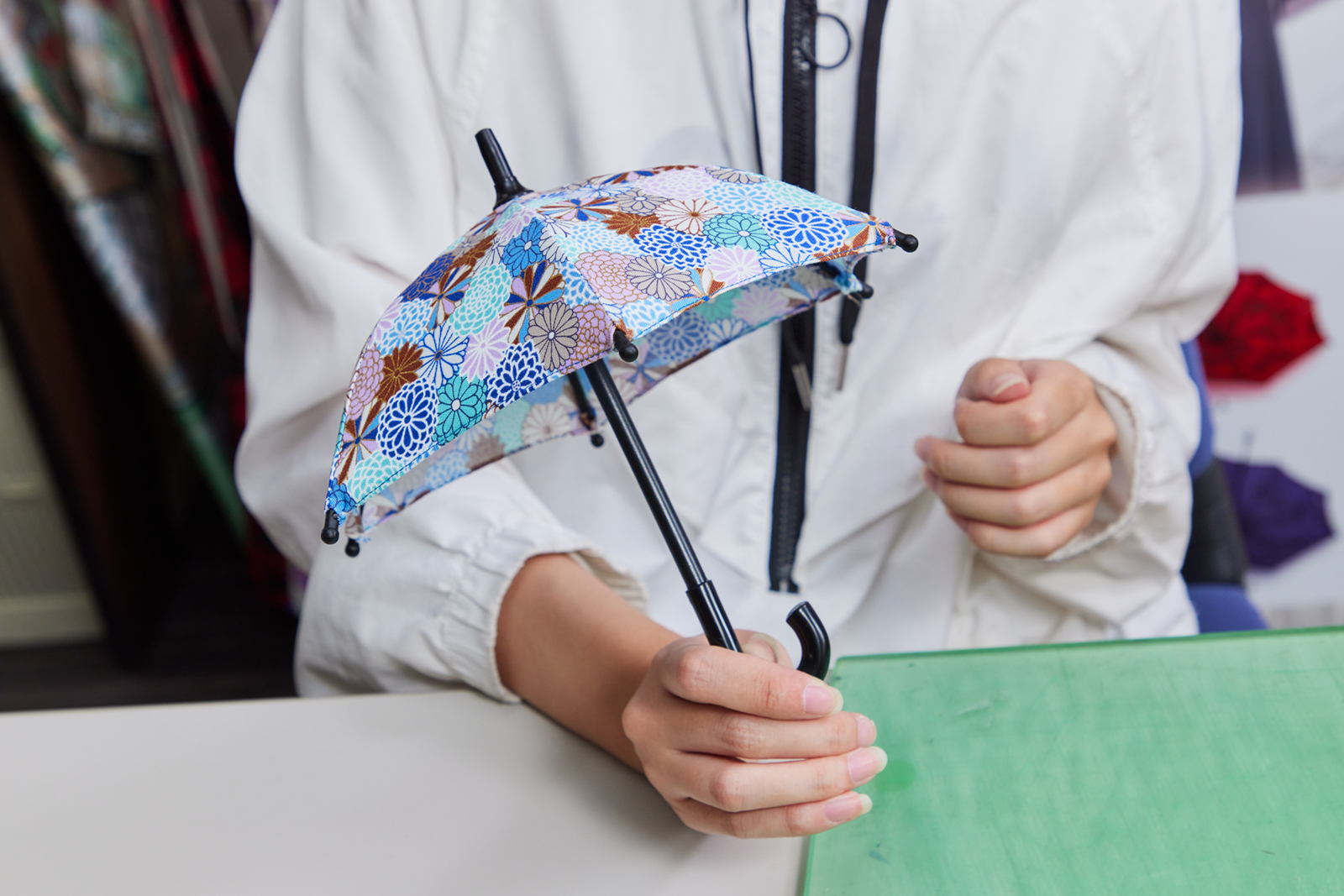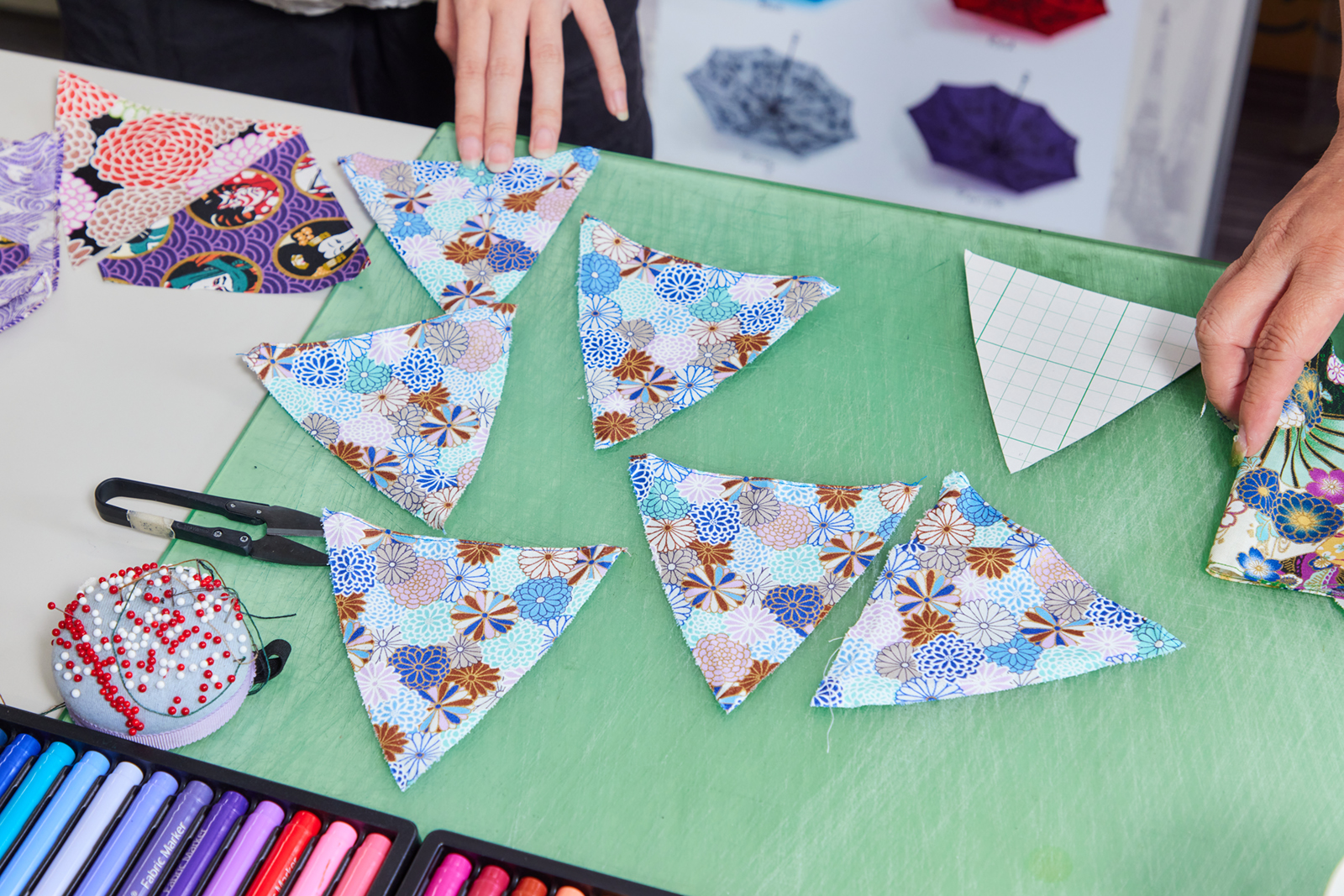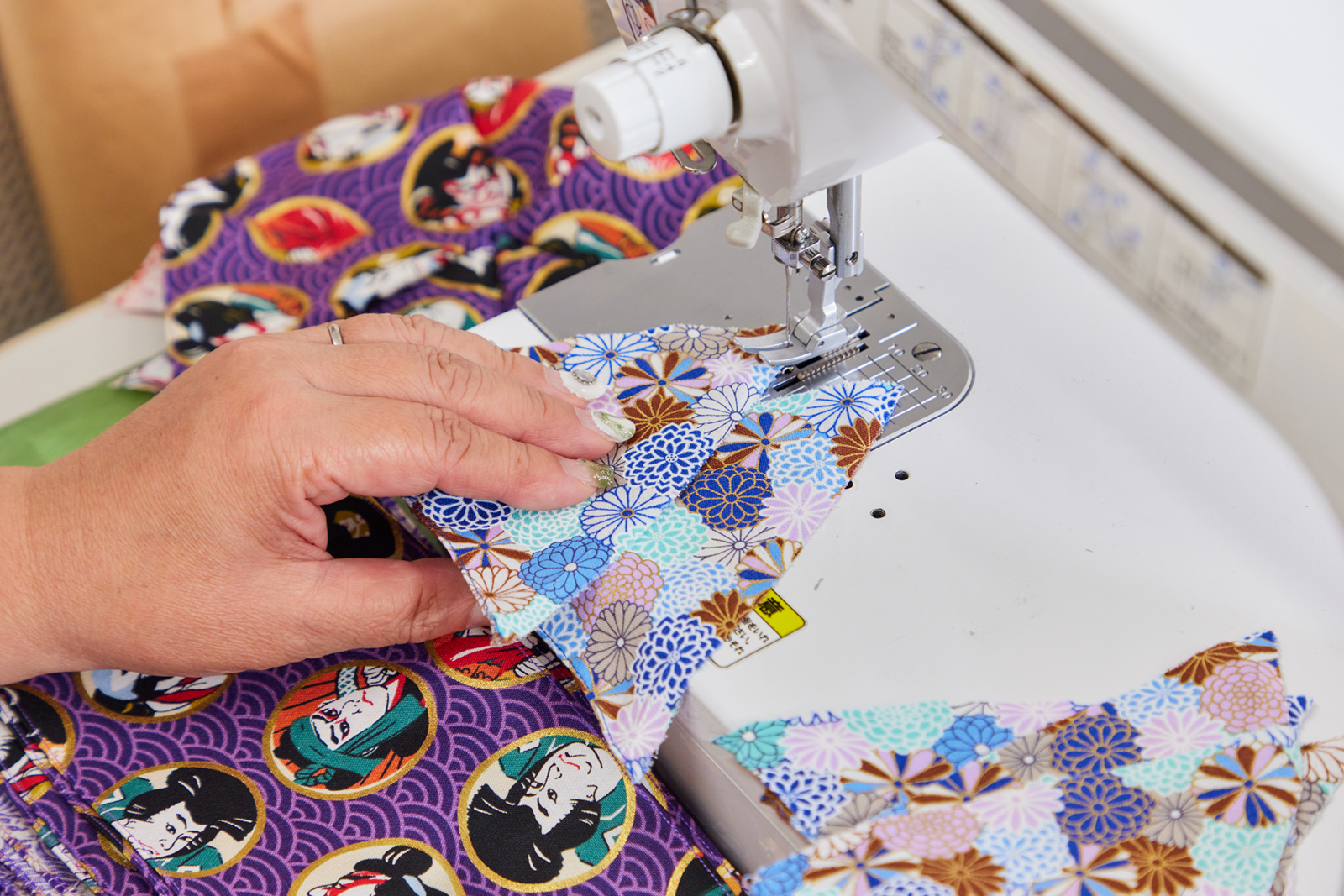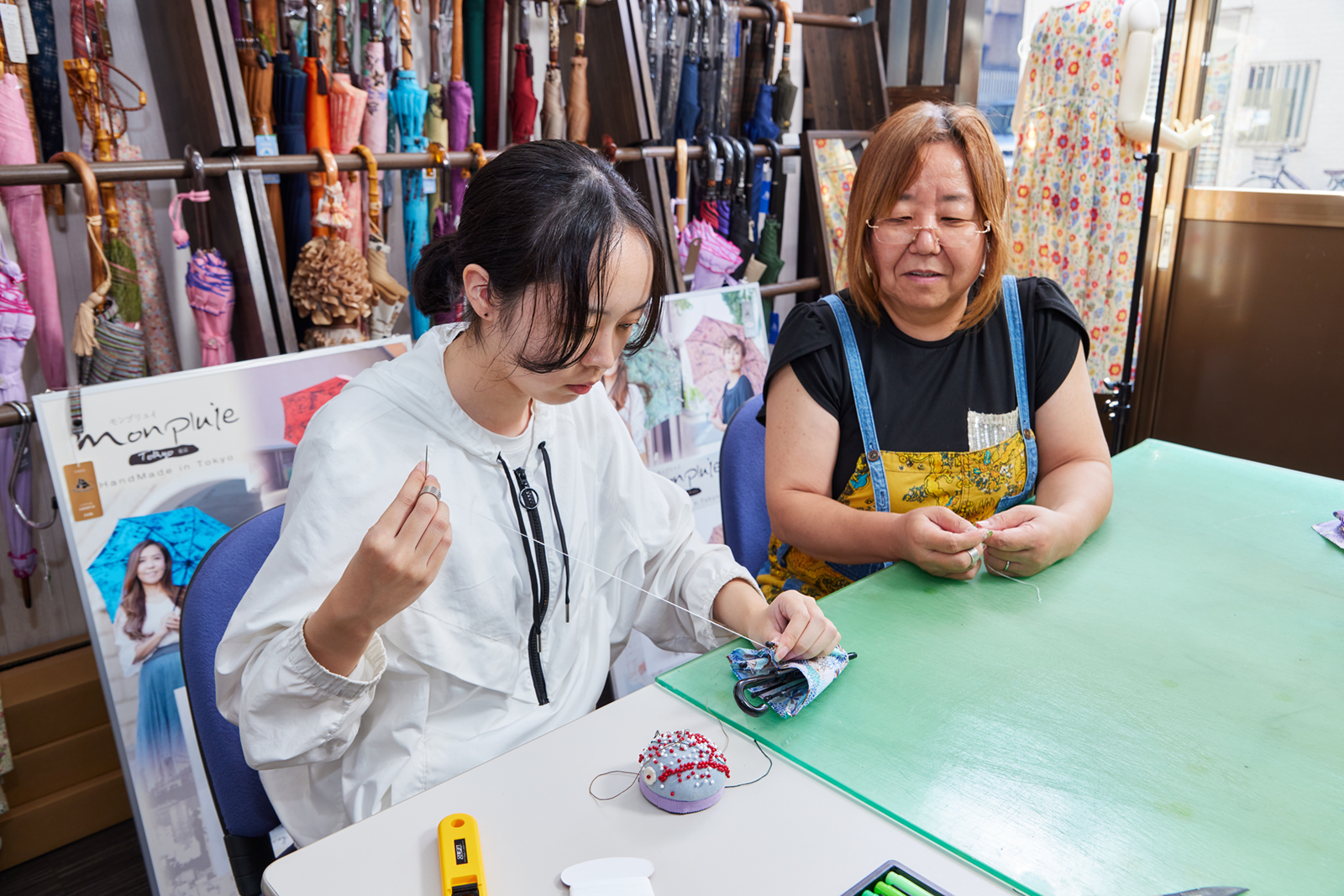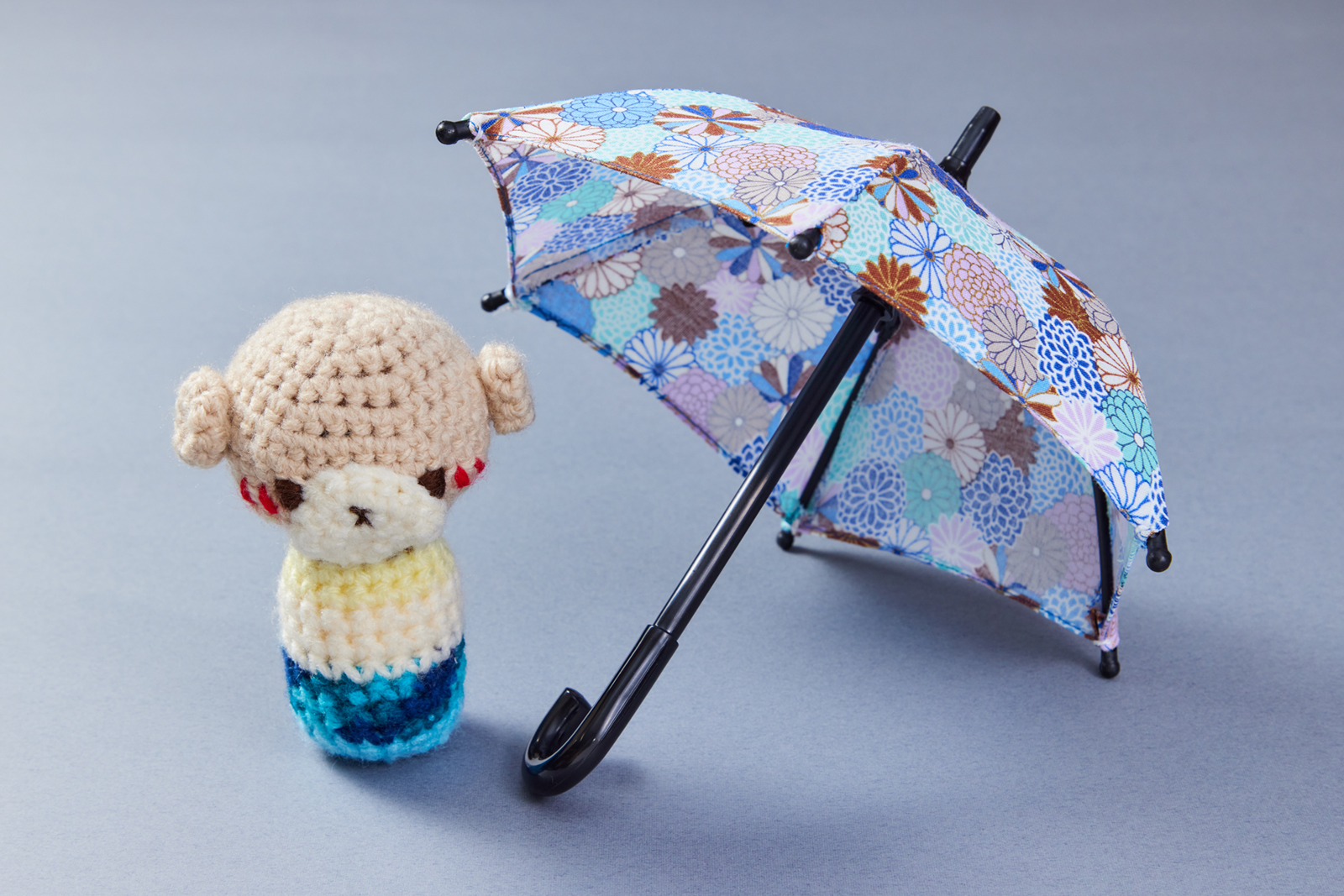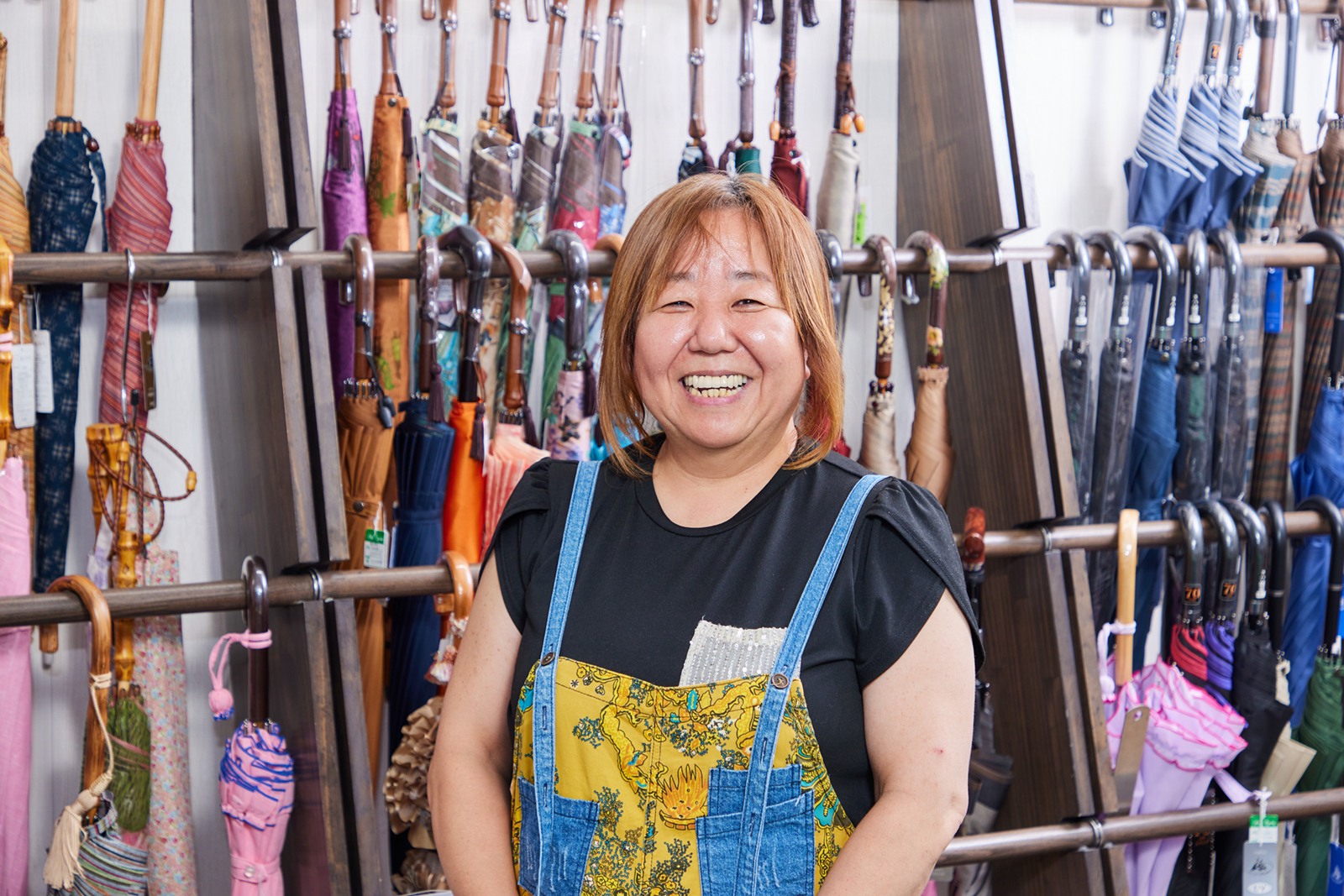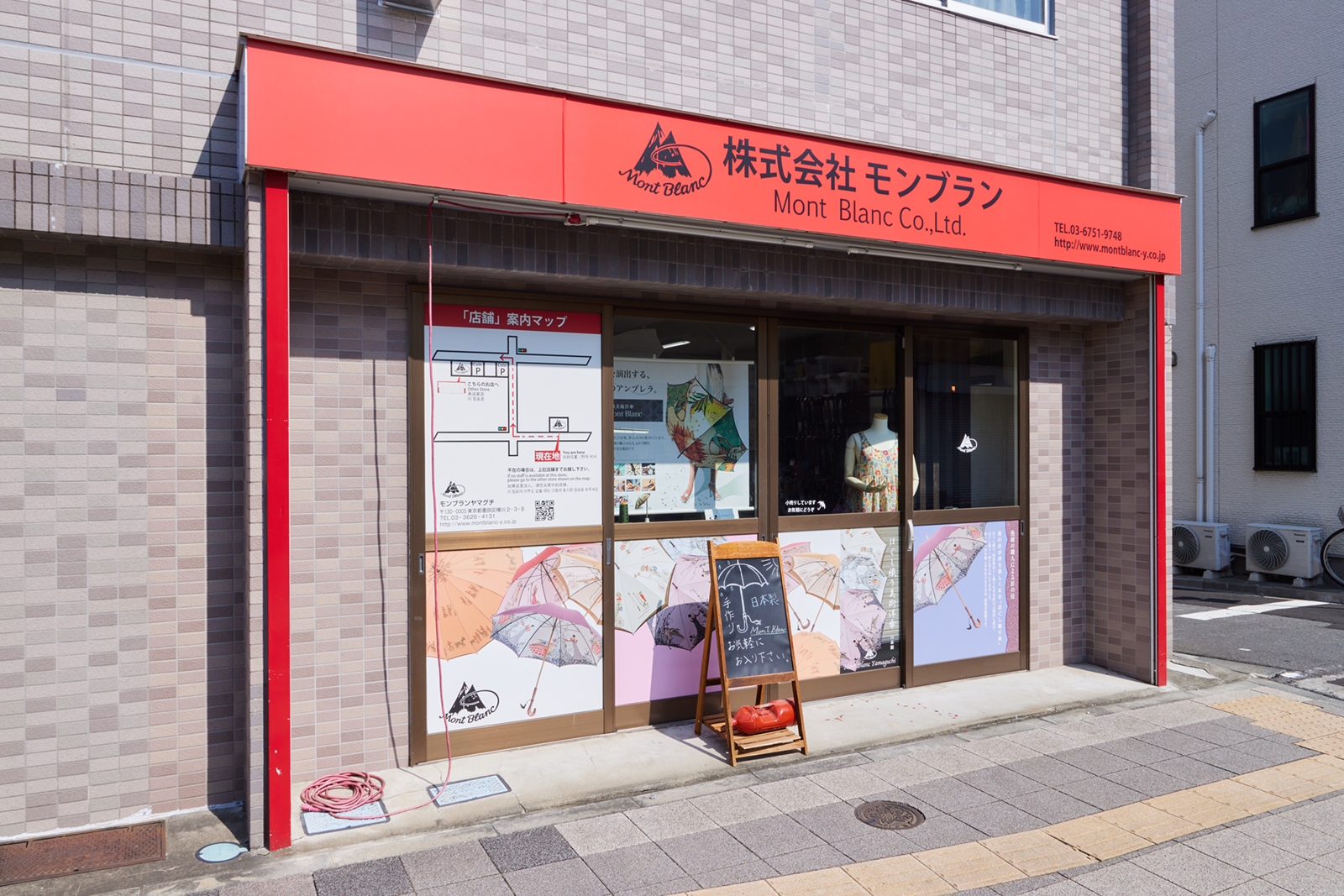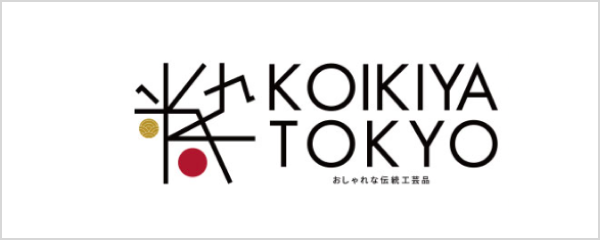The fusion of Western umbrellas and traditional Japanese textiles
Western umbrellas in Japan date back to 1854, when Japan began opening to the world after centuries of isolation. Sailors on the earliest Western ships first introduced these umbrellas, and eventually, they began to be imported by British merchants. By 1868, umbrellas had transformed from luxury items for the wealthy to ordinary items used by the public. The basics of the modern Western umbrella as found in Japan were established by the mid-1920s, with an emphasis on fashionability, portability, and all-weather use.
Masahiro Yamaguchi, the founder of Mont Blanc, established the business when he was 19 years old. It all started when he found himself drawn to the traditional Japanese weaving technique known as Hogushi-Ori. It involves loosely woven warp threads temporarily woven with weft threads and dyed before the final weaving. Removing the temporary weft threads before the final weaving (Hogushi) creates a soft, blurred quality and dream-like designs. Masahiro Yamaguchi wanted to produce umbrellas with his own designs using this technique. His workshop started out as Yamaguchi Shoten shop, where he applied his craft until he founded Mont Blanc in 1960. Specializing in making beautiful umbrellas entirely by hand, today Mont Blanc has lots of fans both in Japan and internationally,too.
An experience crafting a miniature umbrella with the same techniques used to make a real one
In this plan, you will get to crafting a miniature umbrella with Western umbrella-making techniques. It will be a cute little version that can open and close, with a design almost like the real thing. The same umbrella-making techniques will be used to sew the fabric and attach it to the frame.
First, you choose six pieces of fabric. The structure of an umbrella’s frame determines the number of pieces of fabric used. Long umbrellas are typically made with eight pieces of fabric, but some have 12 or even 16 pieces. Most folding umbrellas have six pieces, but some larger ones have eight.
For the miniature umbrella you’ll make, you need six pieces. There are a wide variety of fabric colors and patterns, so you can choose your favorite. There is no need for all six pieces of fabric to have the same pattern. You can use a different pattern for each half, and even a different color or pattern for each of the six pieces of fabric. Choose whatever colors and patterns you like, with your finished product in mind.
Once you have chosen the fabric, you’ll need to cut it to fit the umbrella canopy. Sliding a cutting tool along a wooden template pressed against the fabric, you’ll cut six pieces of fabric of the same size. The most important point is that every piece of fabric should be the same shape and size. To avoid misalignment and uneven edges, you need to cut quickly yet carefully. The process of sliding the cutting tool blade over each piece of cloth will require the most concentration of the experience.
You won’t believe the level of skilled craftsmanship required
Once the six pieces of fabric have been cut, they are then sewn together to form the cover of the umbrella. It is no exaggeration to say that the stitching of an umbrella’s cover is the key to its quality. The precise stitching can’t even deviate by a millimeter, a testament to the skill of the artisans. You may be amazed at how precisely the sewing machine can do the stitching in an instant. If you'd like to have your initials stitched on your umbrella, now's your chance. Whether in English letters of Japanese kanji characters, there is no charge for up to two letters/characters, so please feel free to ask.
Finally, you’ll attach the sewn fabric to the umbrella frame using a needle and thread to complete the piece. Struggling to get the thread through just the right spot is also a valuable part of the umbrella-making experience. Be careful not to prick your fingers with the needle as you finish your umbrella with a taut, well-formed canopy.
You can display your miniature umbrella at home to add a touch of elegance. In Japan it’s also popular to place them beside stuffed animals and figurines to make cute displays of people’s favorite characters. Seeing them stylishly holding a miniature umbrella is sure to make you love them even more.
The chance to find an umbrella that will last for decades
These days, umbrellas tend to be seen as items to be used for a while and disposed of. Ms. Kimie Yamaguchi, the director of Mont Blanc Co., Ltd., says, "If you take proper care of it, a good umbrella can last for decades." The more you use a Hogushi-Ori umbrella, the more character it develops. There are many cases where people have inherited Tokyo umbrellas purchased by their parents decades before and continue to carefully use them, repairing them time and time again.
Ms. Yamaguchi hopes that by experiencing an umbrella that’s been designed to last, people will develop a sense of attachment and appreciation for taking good care of items they value. Your experience of making a miniature umbrella in Japan may even provide the gateway to choosing one of these umbrellas that you’ll feel proud even just to hold.
Mr. Masahiro Yamaguchi, the founder, entered the world of umbrella making at the age of 14. He went independent when he was 19 years old. He founded Yamaguchi Shoten shop in the 1920s with the desire to create umbrellas with original designs using the Hogushi-Ori technique. He incorporated in 1960, establishing Mont Blanc Co., Ltd. The company manufactures and sells entirely hand-crafted umbrellas, primarily for women. Its Western umbrellas made with the beautiful, unique textured fabric produced through Hogushi-Ori are highly acclaimed both in Japan and internationally.
